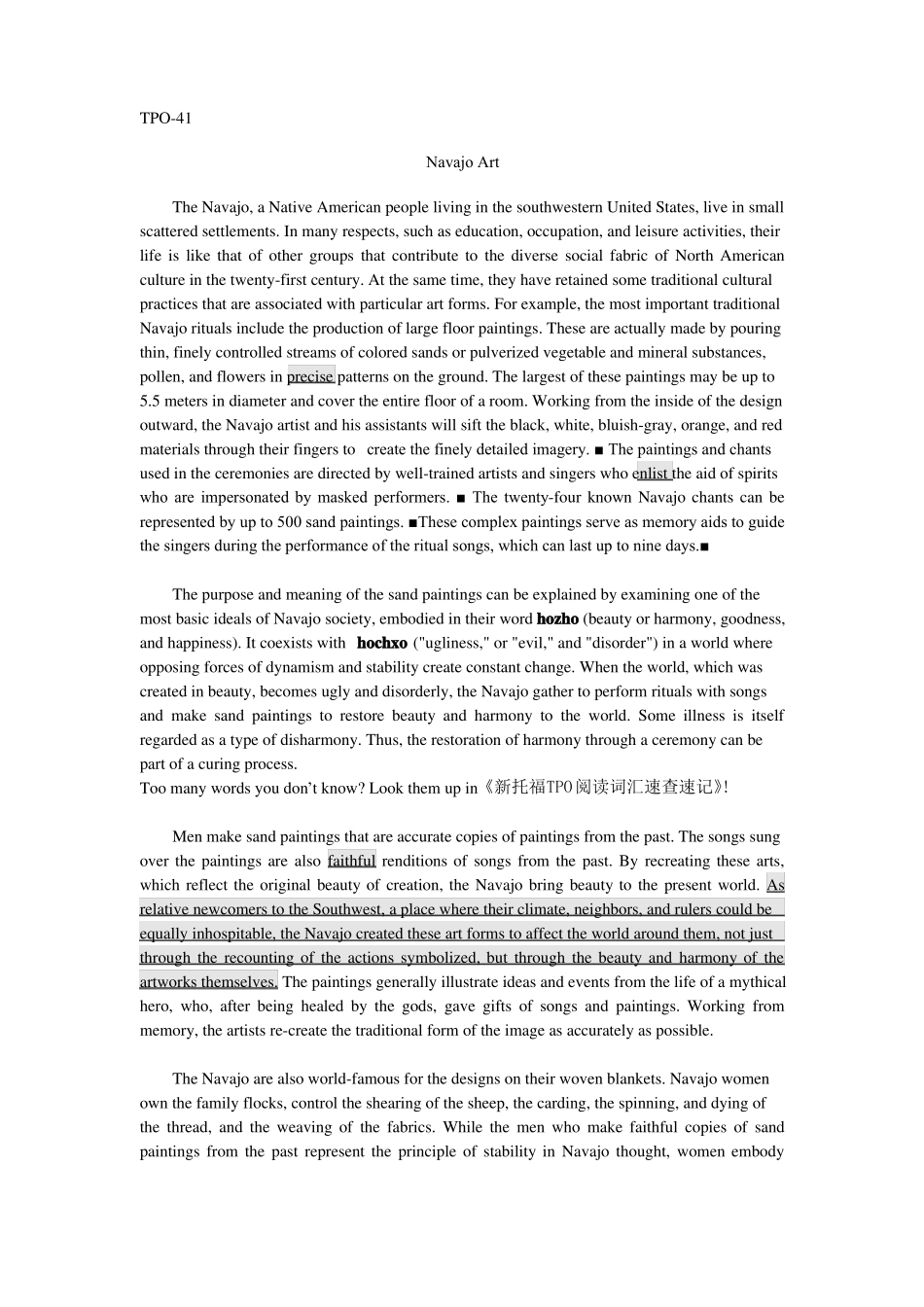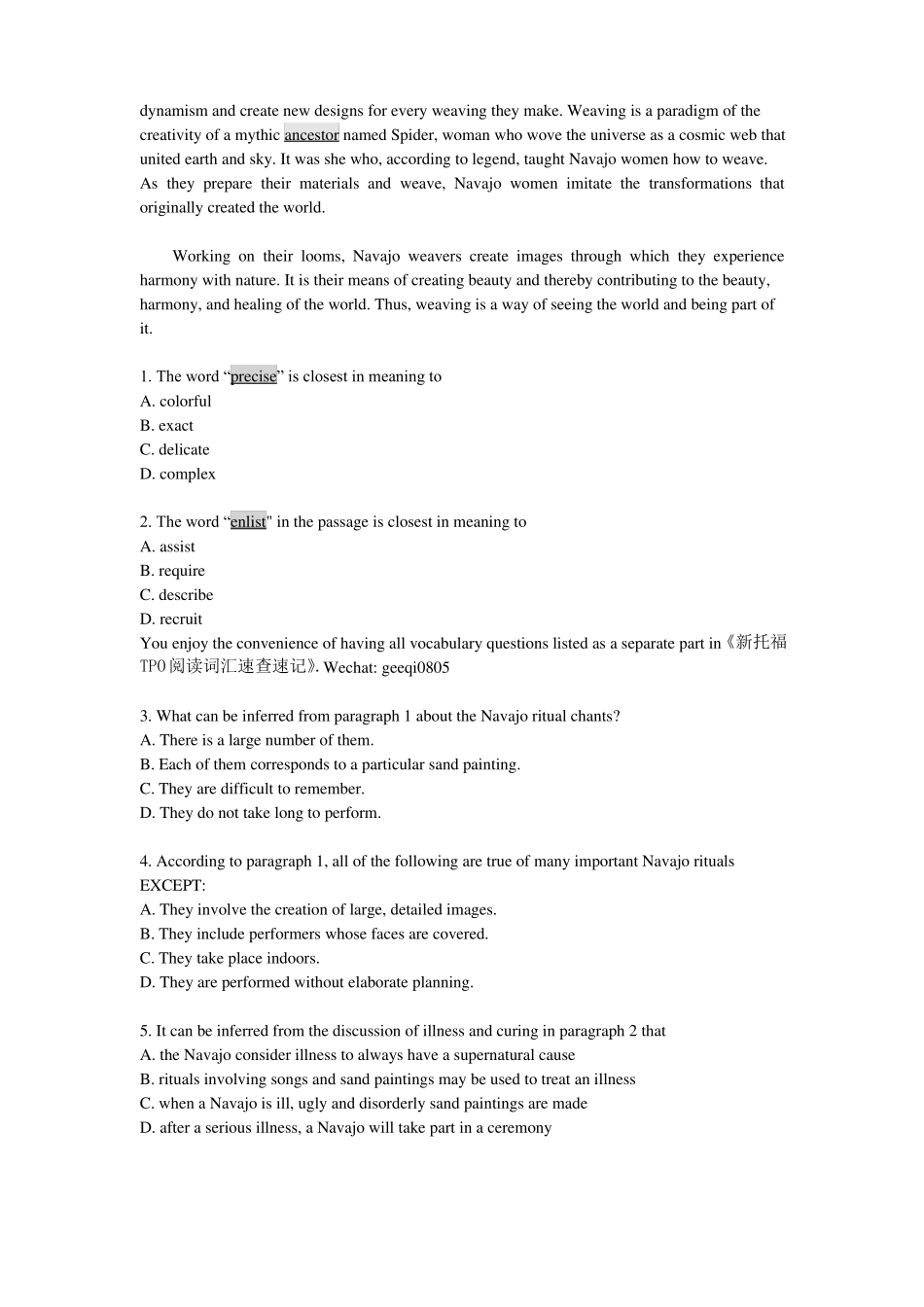TPO-41Navajo ArtThe Navajo, a Native American people living in the southwestern United States, live in smallscattered settlements. In many respects, such as education, occupation, and leisure activities, theirlife is like that of other groups that contribute to the diverse social fabric of North Americanculture in the twenty-first century. At the same time, they have retained some traditional culturalpractices that are associated with particular art forms. For example, the most important traditionalNavajo rituals include the production of large floor paintings. These are actually made by pouringthin, finely controlled streams of colored sands or pulverized vegetable and mineral substances,pollen, and flowers in precise patterns on the ground. The largest of these paintings may be up to5.5 meters in diameter and cover the entire floor of a room. Working from the inside of the designoutward, the Navajo artist and his assistants will sift the black, white, bluish-gray, orange, and redmaterials through their fingers to create the finely detailed imagery. ■ The paintings and chantsused in the ceremonies are directed by well-trained artists and singers who enlist the aid of spiritswho are impersonated by masked performers. ■ The twenty-four known Navajo chants can berepresented by up to 500 sand paintings. ■These complex paintings serve as memory aids to guidethe singers during the performance of the ritual songs, which can last up to nine days.■The purpose and meaning of the sand paintings can be explained by examining one of themost basic ideals of Navajo society, embodied in their word hozho (beauty or harmony, goodness,and happiness). It coexists with hochxo ("ugliness," or "evil," and "disorder") in a wo...


